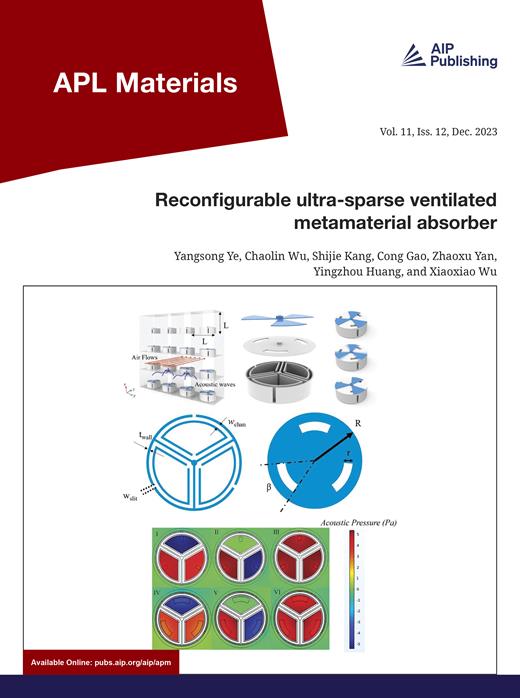Iron-based catholytes for aqueous redox-flow batteries
IF 5.3
2区 材料科学
Q2 MATERIALS SCIENCE, MULTIDISCIPLINARY
引用次数: 0
Abstract
Redox-flow batteries (RFBs) are promising electrochemical energy storage devices to load-level intermittent power from renewable energy. In particular, aqueous RFBs using aqueous electrolytes possess several advantages over nonaqueous ones, such as low fabrication cost, nontoxicity, safety, and environmental benignity. Therefore, developing high-performance, abundant, less-expensive iron-based catholytes for aqueous RFBs is essential toward their wide deployment in a power grid. In this Perspective, we summarize the recent progress of iron-based catholytes for aqueous RFBs. We emphasize that iron-based catholytes possess widely ranged redox potentials (−1.0 to 1.5 V vs standard hydrogen electrodes) and solubility in water (0.2–4.0 mol L−1), thereby providing a wide range of cell performance. The molecular design, such as ligand functionalization, counter ion mixing, and asymmetrization, allows for rationally improving solubility, redox potential, and energy density. Furthermore, we demonstrate a simple evaluation method of the redox potential of iron-based catholytes using the calculated energy levels of the lowest unoccupied molecular orbital of ligand molecules. Finally, we rationalize the design strategy of iron-based catholytes for advanced aqueous RFBs.水氧化还原液流电池用铁基阴极
氧化还原液流电池(RFBs)是一种很有前途的可再生能源负载级间歇供电的电化学储能装置。特别是,与非水电解质相比,使用水电解质的水性rfb具有许多优点,例如制造成本低、无毒、安全、环保。因此,开发高性能、丰富、廉价的铁基阴极材料用于rfb,对其在电网中的广泛应用至关重要。在这方面,我们总结了近年来用于rfb的铁基阴极电解质的研究进展。我们强调,铁基阴极具有广泛的氧化还原电位(- 1.0至1.5 V vs标准氢电极)和在水中的溶解度(0.2-4.0 mol L−1),从而提供了广泛的电池性能。分子设计,如配体功能化、反离子混合和不对称,允许合理地提高溶解度、氧化还原电位和能量密度。此外,我们还展示了一种简单的评价铁基阴极电解质氧化还原电位的方法,该方法使用配体分子的最低未占据分子轨道的计算能级。最后,对先进的水基rfb中铁基阴极液的设计策略进行了合理化。
本文章由计算机程序翻译,如有差异,请以英文原文为准。
求助全文
约1分钟内获得全文
求助全文
来源期刊

APL Materials
NANOSCIENCE & NANOTECHNOLOGYMATERIALS SCIE-MATERIALS SCIENCE, MULTIDISCIPLINARY
CiteScore
9.60
自引率
3.30%
发文量
199
审稿时长
2 months
期刊介绍:
APL Materials features original, experimental research on significant topical issues within the field of materials science. In order to highlight research at the forefront of materials science, emphasis is given to the quality and timeliness of the work. The journal considers theory or calculation when the work is particularly timely and relevant to applications.
In addition to regular articles, the journal also publishes Special Topics, which report on cutting-edge areas in materials science, such as Perovskite Solar Cells, 2D Materials, and Beyond Lithium Ion Batteries.
 求助内容:
求助内容: 应助结果提醒方式:
应助结果提醒方式:


